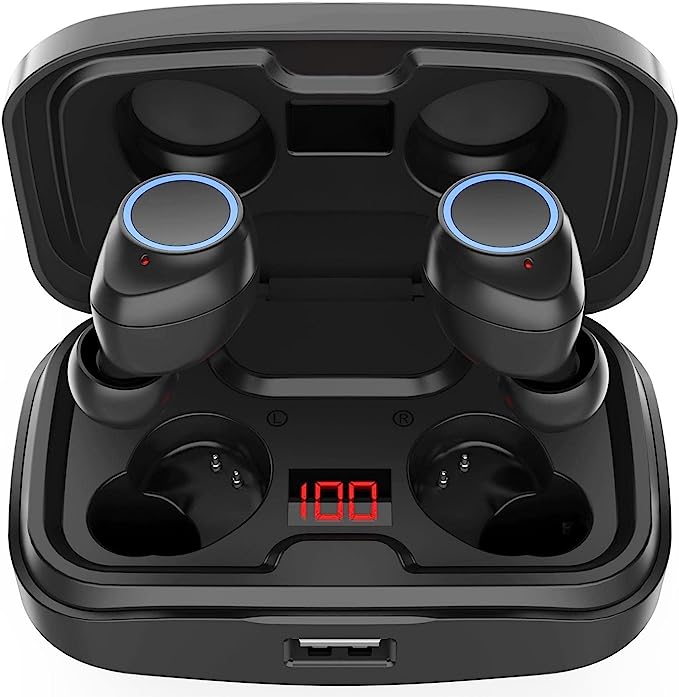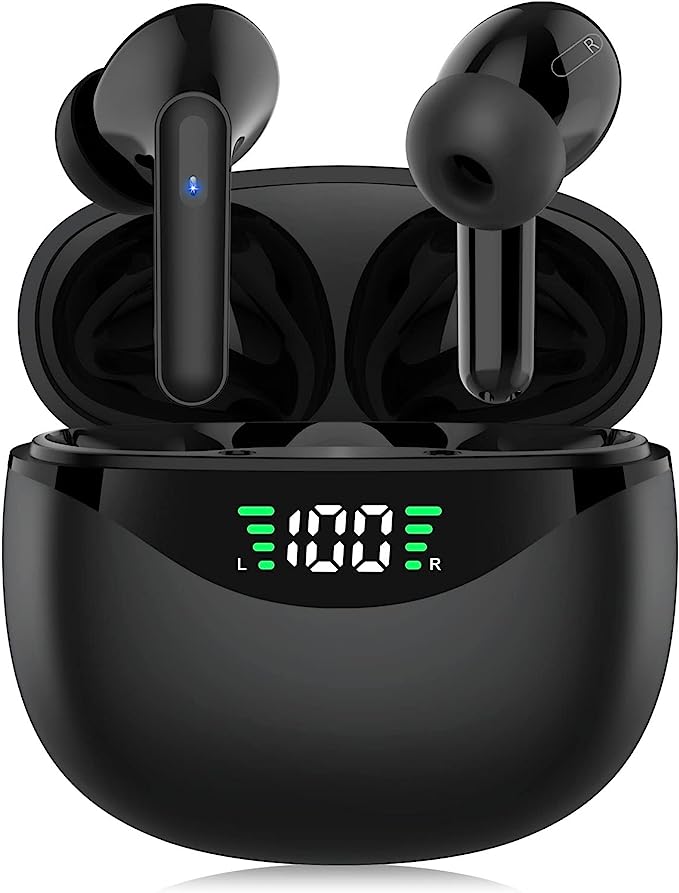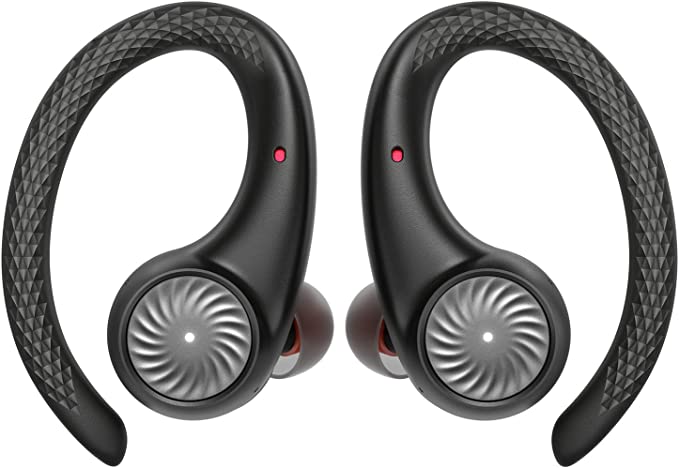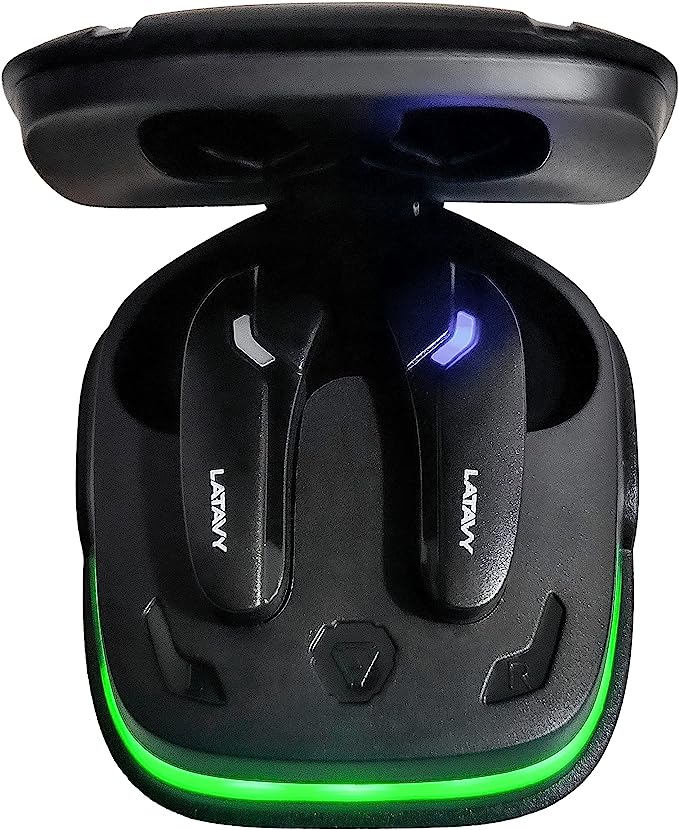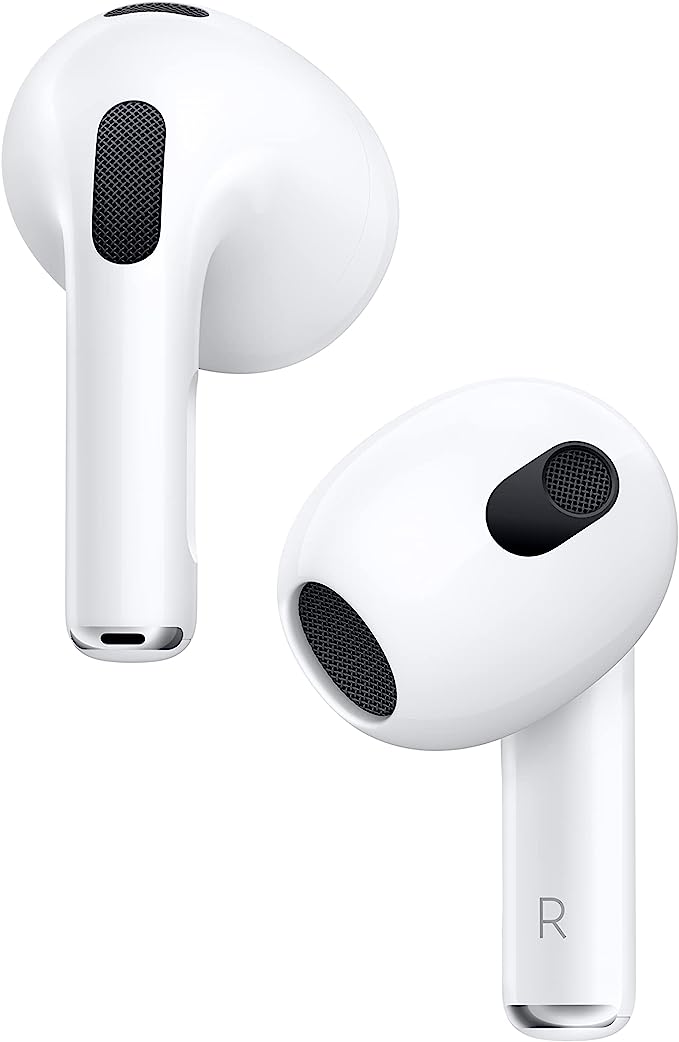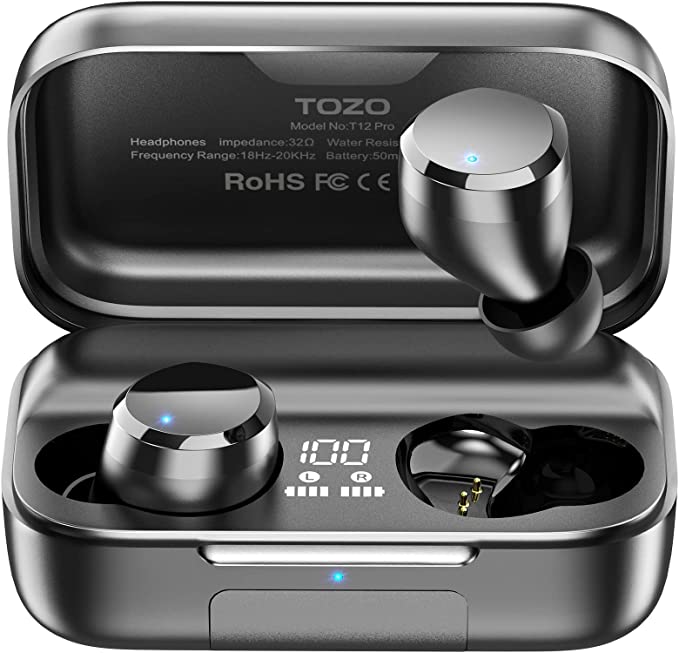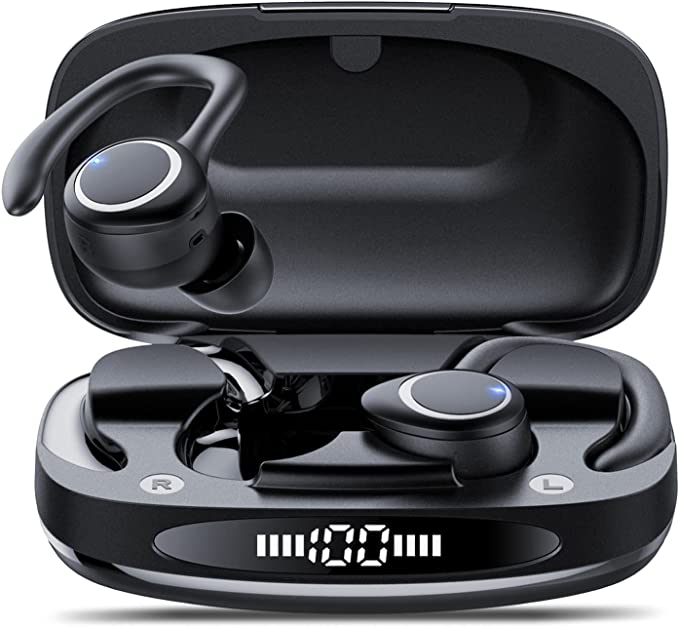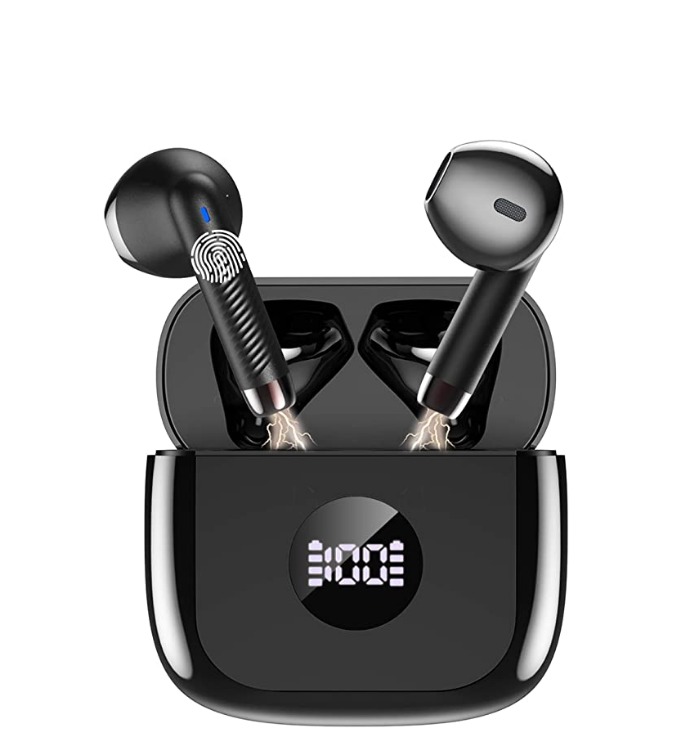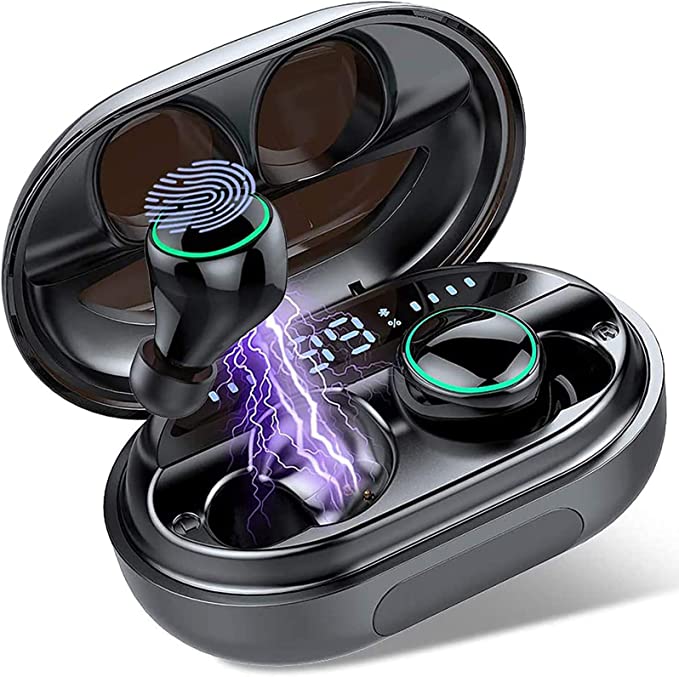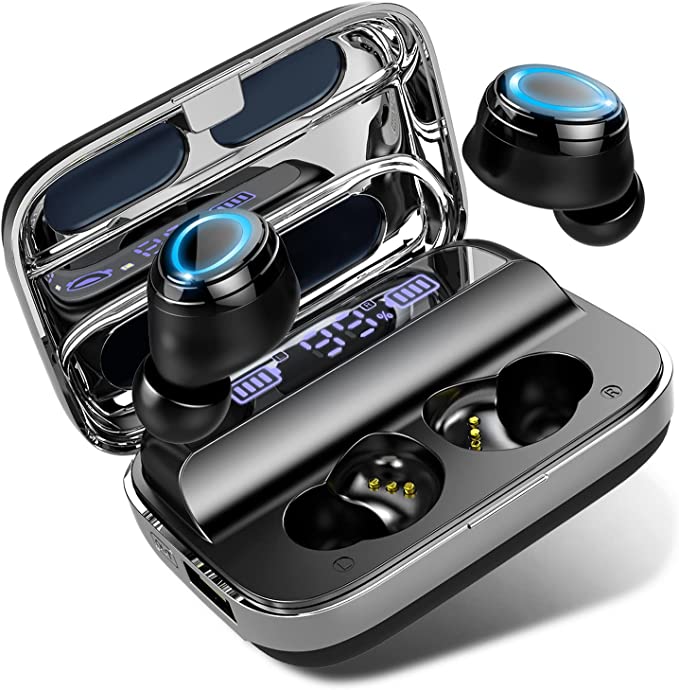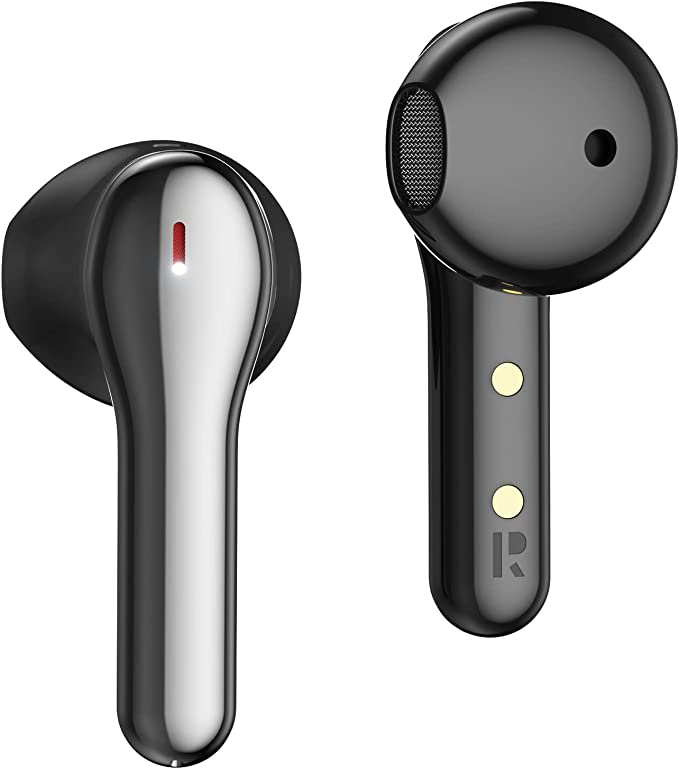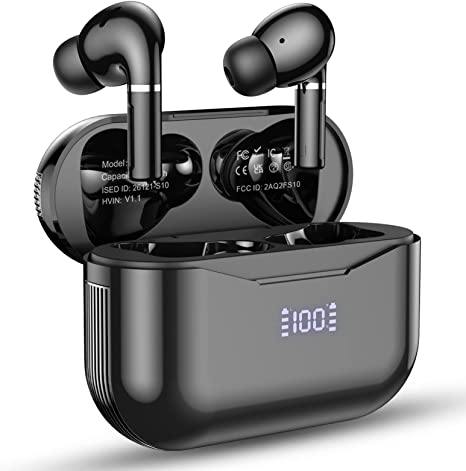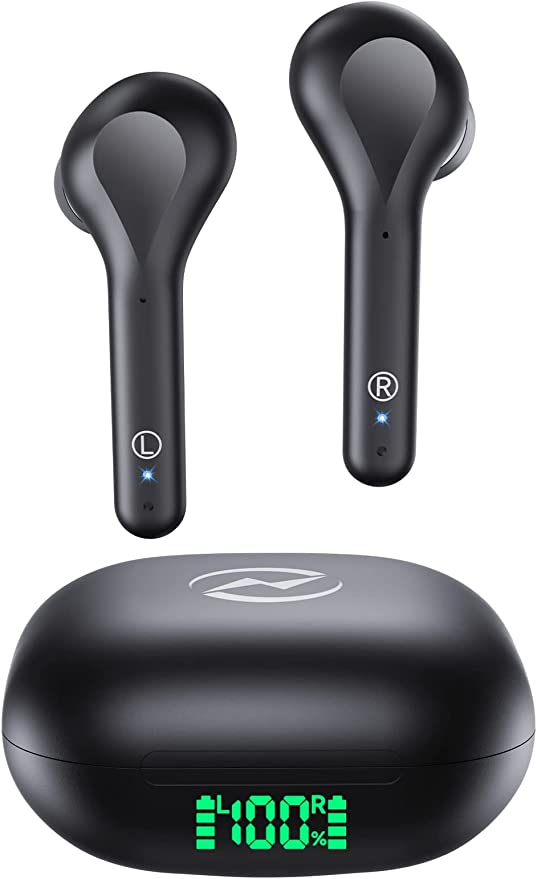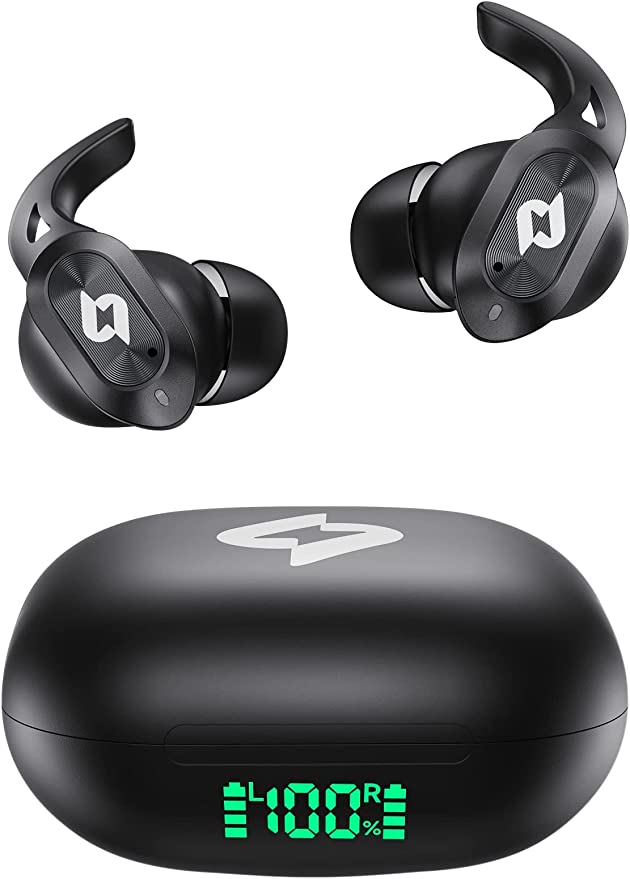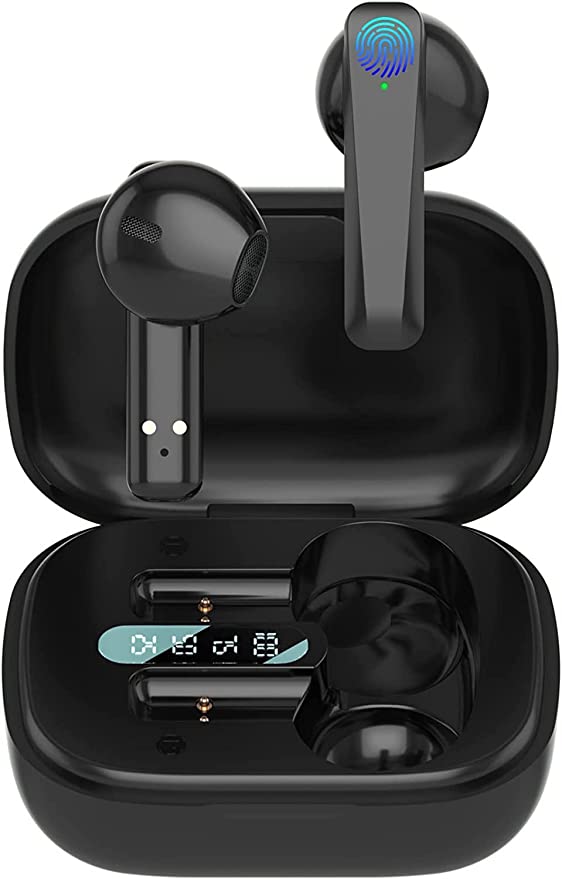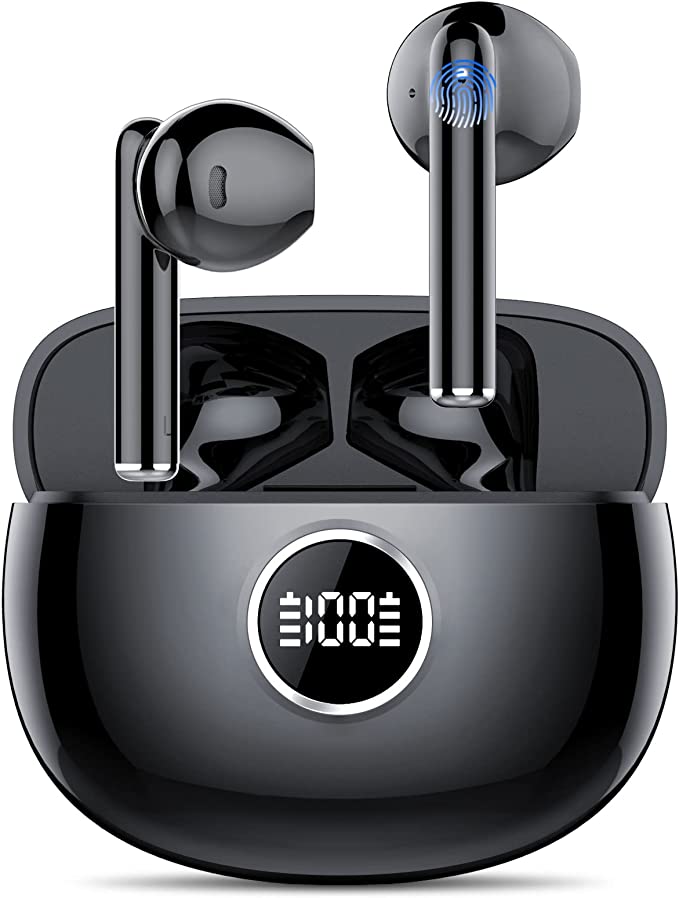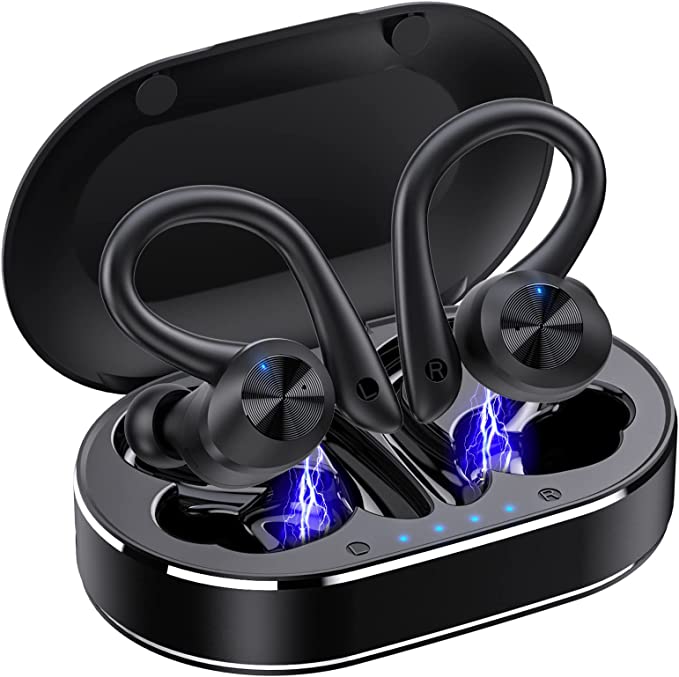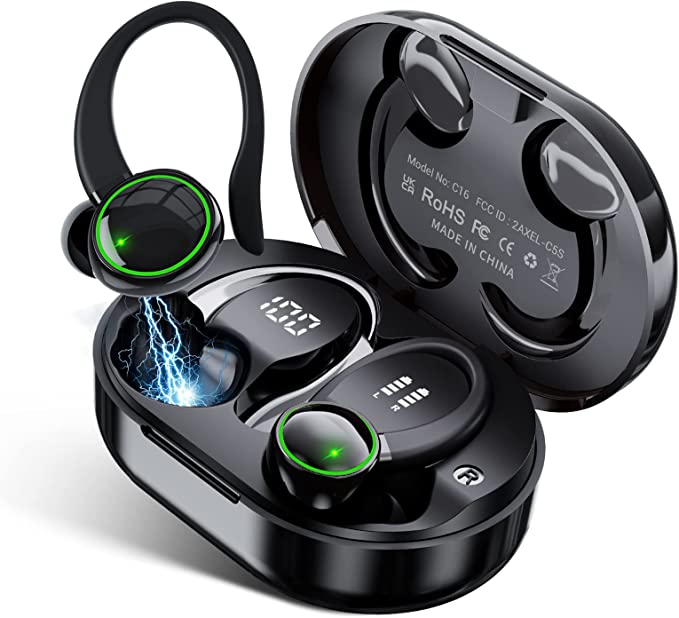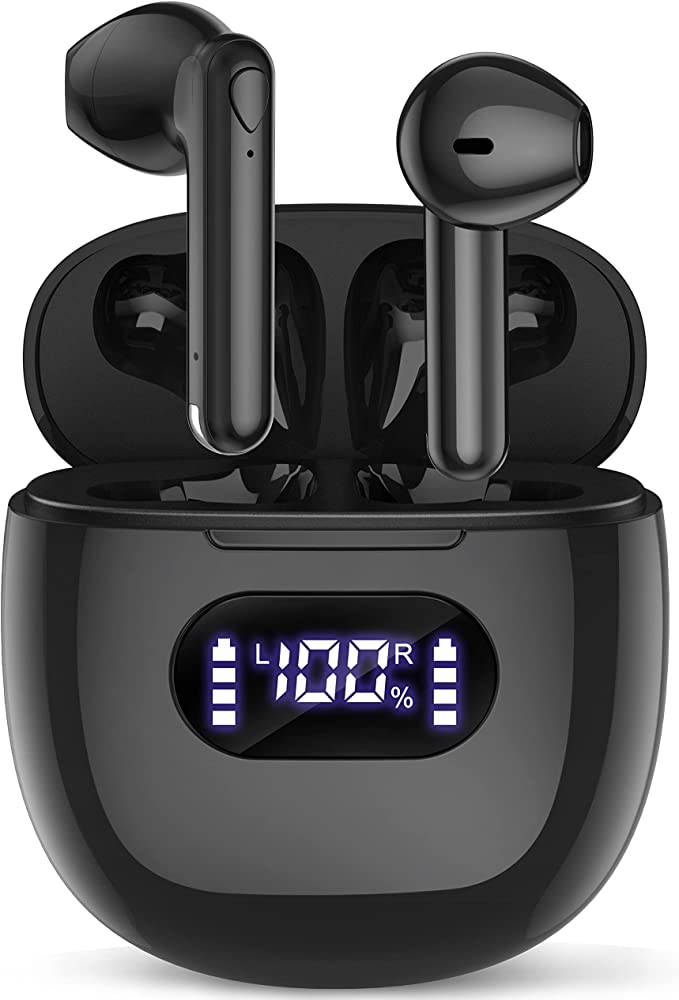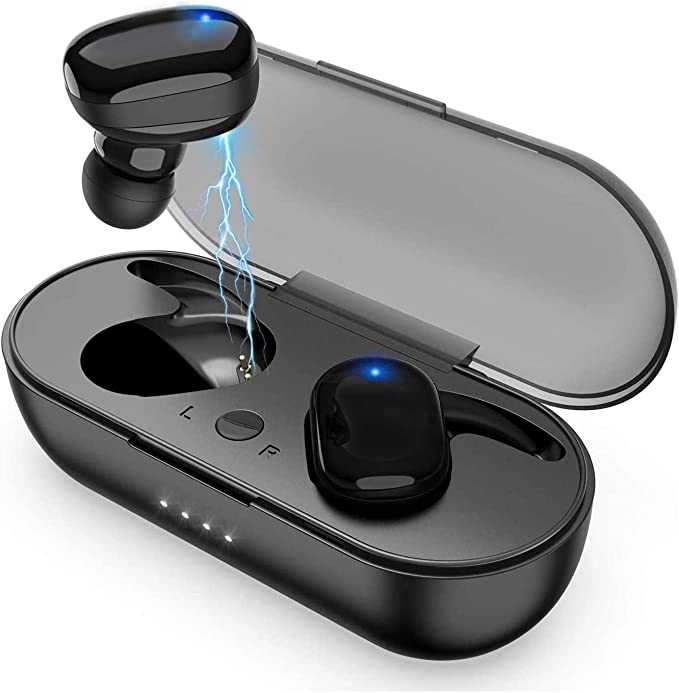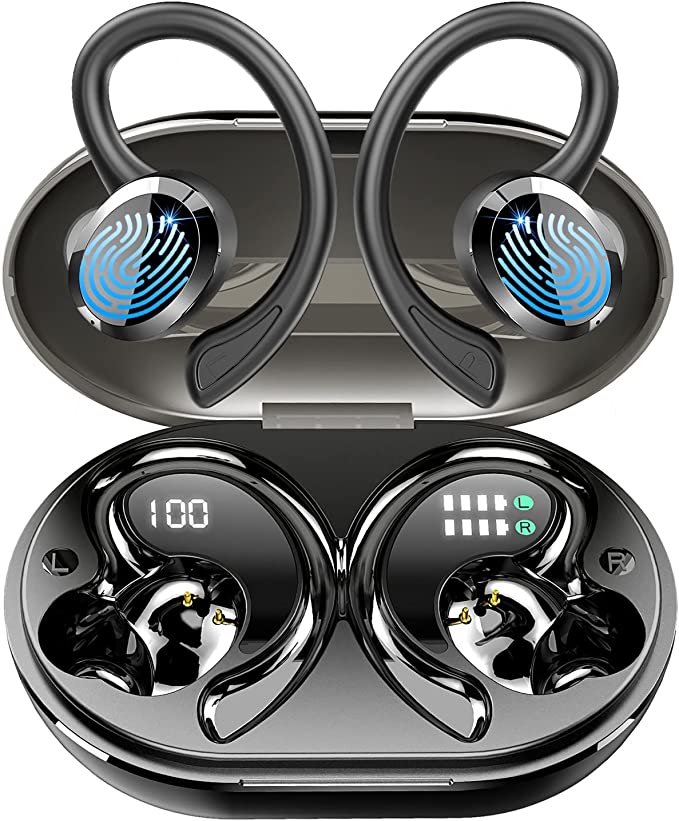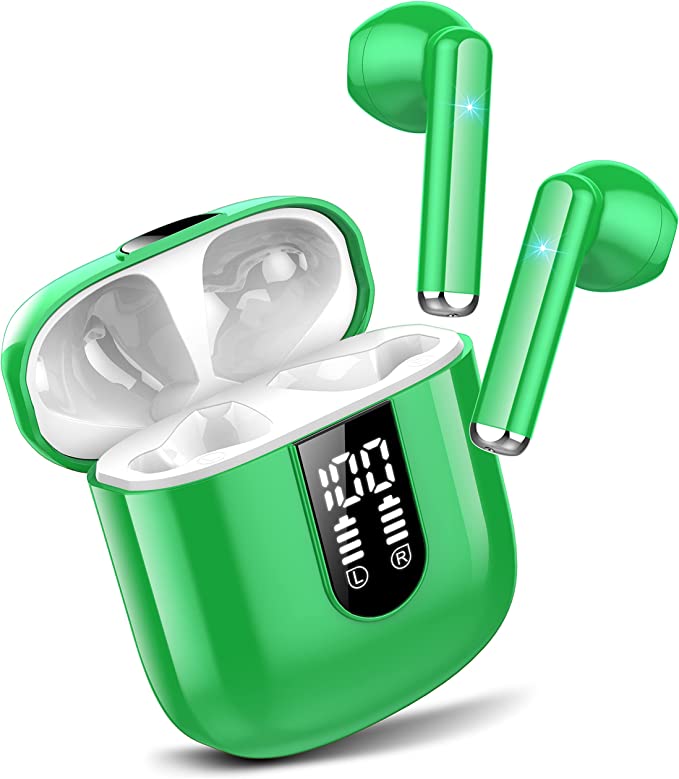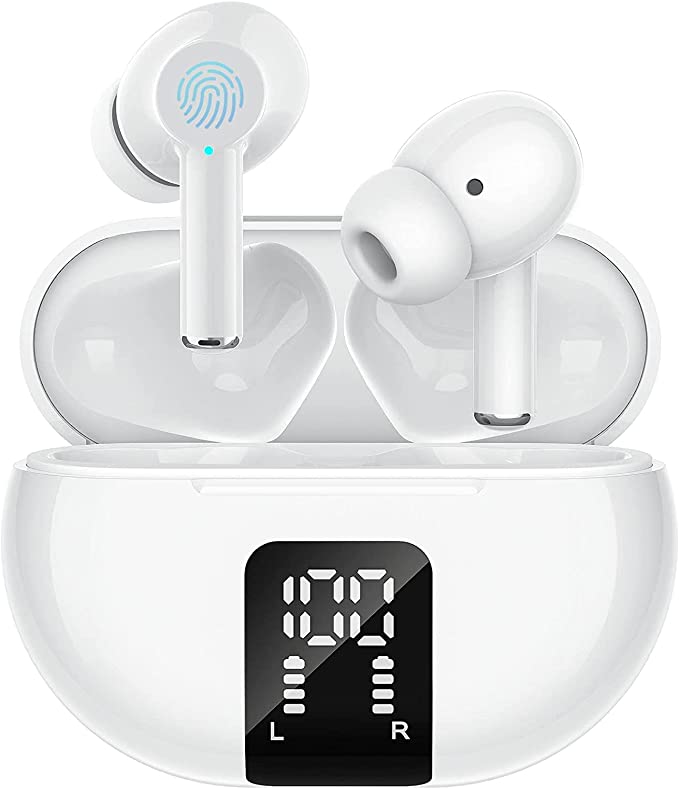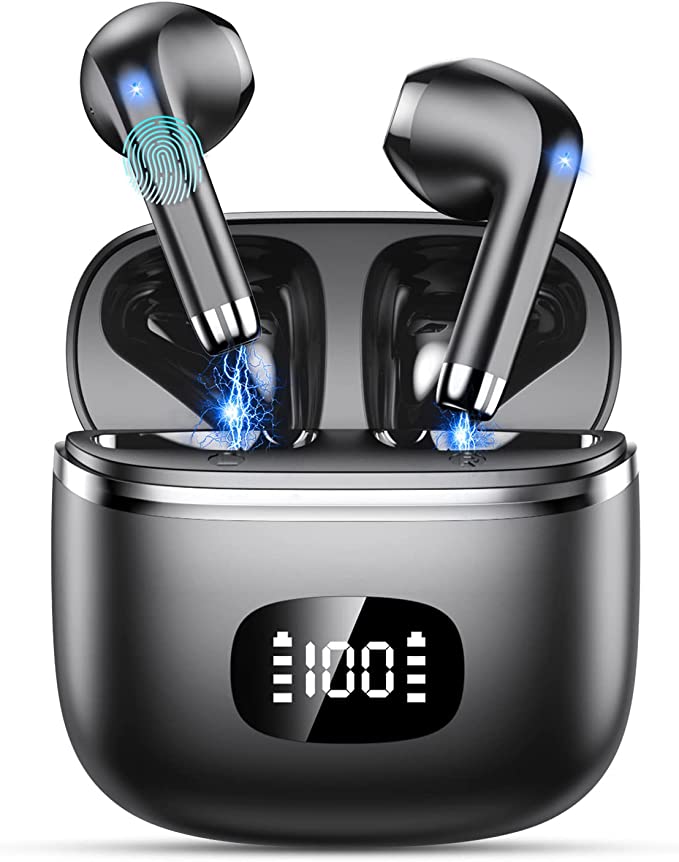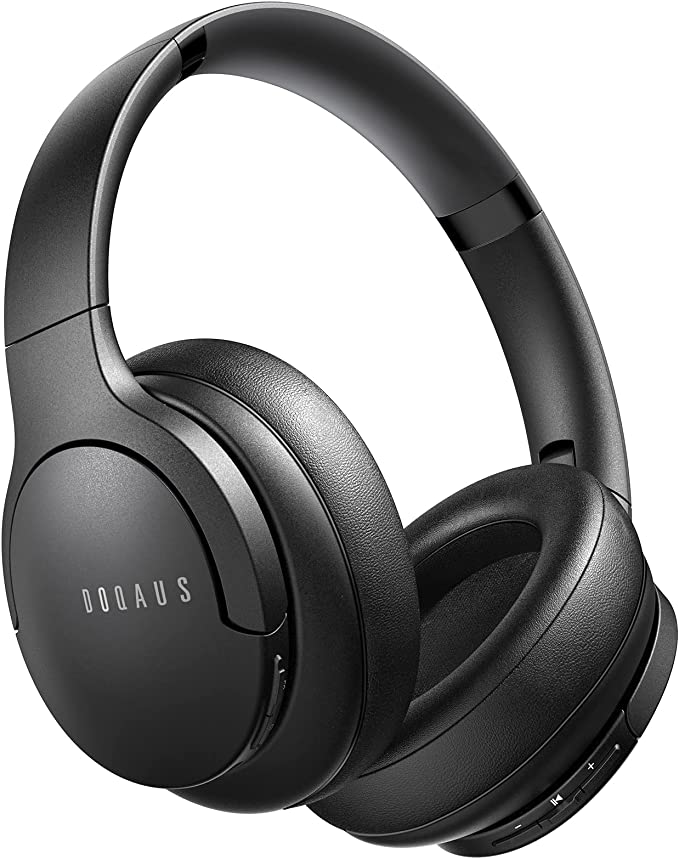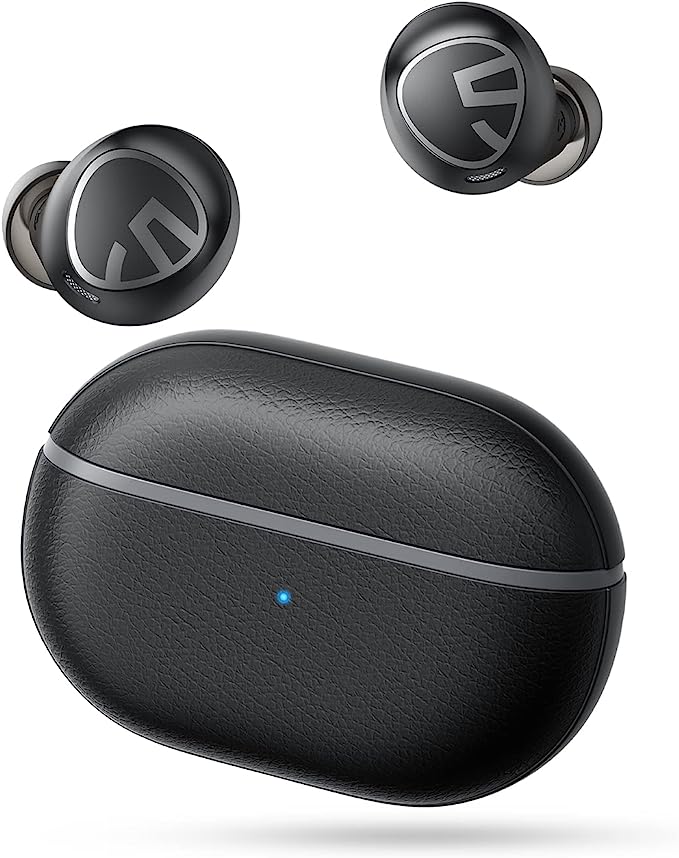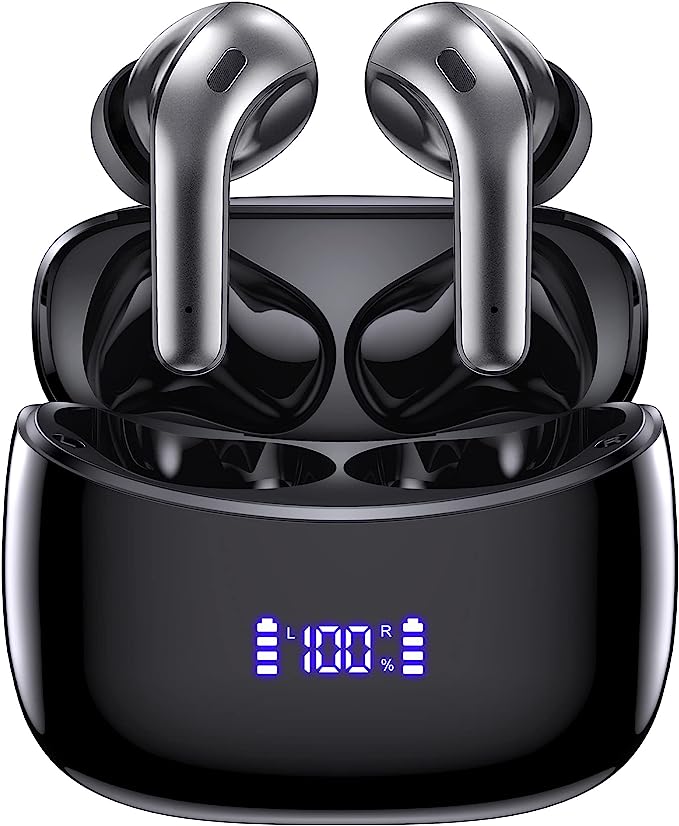How Do Earbuds Get 91 Hours of Battery? Deconstructing the Tech Behind All-Day Power
Update on Oct. 29, 2025, 7:39 p.m.
You’ve probably seen the ads or product listings: tiny wireless earbuds promising an astounding 50, 70, or even 90+ hours of playback. A common first reaction is skepticism. How can something that fits in your ear, with no visible power cord, last for days on end? Is it a marketing gimmick, or is there some clever technology at play?
Welcome to your masterclass on modern earbud endurance. Today, we’re going to pull back the curtain on how this seemingly impossible feat is achieved. Forget the marketing jargon; we’re diving into the core science of batteries, power management, and audio engineering. To make this real, we’ll use the HIYDOO H66 Wireless Headphones as our practical example, a device that claims a massive 91 hours of total playback. By the end of this guide, you’ll not only understand how the H66 works, but you’ll also be equipped to evaluate the battery claims of any wireless earbuds you encounter.

The Core of Endurance: It’s Not the Earbuds, It’s the Case
Here’s the biggest secret to ultra-long playback: the earbuds themselves don’t hold 91 hours of charge. Not even close. The real hero of this story is the charging case. Think of it as a portable power plant specifically for your earbuds.
Let’s break down the math using the specs for the HIYDOO H66. It’s a fantastic real-world example of this two-part power system.
- The Earbuds’ “Fuel Tank”: Each individual earbud has a small 50mAh battery. The “mAh” stands for milliampere-hour, a standard unit for measuring a battery’s energy capacity. A 50mAh battery is tiny, designed to be lightweight and comfortable for hours of wear. On its own, it might provide around 6-8 hours of continuous listening.
- The Case’s “Energy Reservoir”: The charging case, however, contains a much larger 1800mAh Lithium-Polymer battery.
Now, the magic happens. When you’re done listening, you place the earbuds back into the case. The case then uses its massive internal battery to recharge the tiny batteries in the earbuds.
Let’s do a quick calculation: 1800mAh (Case) / 100mAh (for two earbuds) = 18 full recharges. The product page claims up to 13 full charges, which is a more conservative and realistic figure that accounts for energy transfer loss and other factors.
So, the “91 hours” is the total accumulated time. It’s the initial 7 hours from the earbuds, plus the 13 additional times you can recharge them for another 7 hours each (7 + (13 * 6.5) ≈ 91.5). It’s a simple but brilliant system. You get a full day’s worth of listening, then pop them in the case while you work or sleep, and they’re ready to go again, drawing power from the case’s reservoir. This cycle repeats until the case itself needs to be recharged via its USB-C port.
The H66 case even includes a clear LED digital display, which acts as a fuel gauge. It eliminates the guesswork by showing you the exact percentage of power left in the case and confirms when the earbuds are actively charging. This small feature is a huge confidence booster, letting you know exactly how much auditory freedom you have left.

The Hidden Superpower: When Your Earbud Case Becomes a Lifeline
The ingenuity of a large-capacity case like the one with the HIYDOO H66 doesn’t end with recharging earbuds. Look closely, and you’ll find a standard USB-A port—the same kind you see on laptops and wall chargers. This transforms the case into a miniature, pocketable power bank for your other gadgets.
The principle is identical to how it charges the earbuds. The 1800mAh battery stores energy that can be discharged to any device connected to it. While it won’t give your modern smartphone (which typically has a 3,000-5,000mAh battery) a full charge, it’s not meant to. This is your emergency backup.
Imagine being in a situation where your phone is at 1% battery, you need to make a critical call or check a map, and there’s no outlet in sight. In that moment, being able to plug your phone into your earbud case for a 10-15% boost is a genuine lifesaver. It’s enough to send that urgent text, confirm your location, or keep your device alive until you can get to a proper charger. This clever dual-purpose design adds a layer of practical utility that makes the device a more valuable part of your everyday carry.

The Science of Sound: What a “Large” 11mm Driver Really Means
While battery life gets the headlines, the ultimate purpose of earbuds is to deliver great sound. In the world of tiny audio devices, a key component you’ll see mentioned is the “driver.” The HIYDOO H66, for example, features an 11mm large dynamic driver. But what does that mean for you?
Think of the driver as the speaker of the earbud. It’s the part that vibrates to turn an electrical signal into the sound waves you hear. A dynamic driver works like a miniature version of a classic loudspeaker.
- A magnet creates a magnetic field.
- A voice coil attached to a diaphragm (a thin cone) sits inside this field.
- When the audio signal (electricity) passes through the coil, it moves back and forth.
- This movement vibrates the diaphragm, which pushes air and creates sound.
The 11mm measurement refers to the diameter of that diaphragm. For in-ear headphones, 11mm is quite generous. A larger diaphragm can move more air, which is especially helpful for producing low-frequency sounds. This is the science behind what marketing calls “rich bass.” A larger surface can create those deeper, more resonant vibrations more effectively than a smaller one.
However, size isn’t the only factor. The real magic is in creating a balanced sound profile, where the bass doesn’t overwhelm the clear highs (cymbals, vocals) and natural midrange (guitars, speech). The quality of the driver materials and the acoustic design of the earbud itself are just as important.
Crucially, none of this matters without a proper seal in your ear. This is why products like the H66 provide multiple sizes of silicone eartips. A snug fit creates a sealed acoustic chamber, which does two things: * It prevents bass frequencies from escaping, allowing you to hear the full power of the driver. * It provides passive noise isolation by physically blocking outside sound, letting you focus on your audio without needing to blast the volume.

The Invisible Handshake: Making Wireless Work for You
The final piece of the puzzle is connectivity. The HIYDOO H66 uses True Wireless Stereo (TWS) technology, which means there isn’t even a wire connecting the two earbuds. Each one communicates independently with your phone via Bluetooth.
When you first pair your earbuds, they perform a secure digital “handshake” with your phone, creating an encrypted link over the 2.4 GHz radio frequency. Modern Bluetooth versions have become incredibly efficient, offering more stable connections over distances up to 33 feet (10 meters) while consuming very little power—a key factor in extending the earbuds’ own battery life.
To remove user friction, most modern earbuds, including the H66, feature auto-connect. After the initial setup, the earbuds automatically link to your device the moment you open the case. This small convenience makes a huge difference in daily use. For moments when you need to switch devices or troubleshoot a connection, a one-step reset function provides a simple way to wipe the slate clean without navigating complex menus, turning a potential frustration into a minor inconvenience.

Designed for Reality: Understanding IPX5 Durability and Comfort
Technology needs to withstand real life. The IPX5 waterproof rating on the H66 is a perfect example of practical engineering. The “IP” stands for Ingress Protection. * The ‘X’ means it hasn’t been rated for dust protection. * The ‘5’ means it’s protected from low-pressure water jets from any angle.
In plain English, this means you can sweat all over them at the gym, get caught in the rain on a run, or accidentally splash them without worry. It’s crucial to understand that this is water-resistant, not waterproof. As the manufacturer correctly notes, they are not meant for swimming or showering. But for everyday fitness and unexpected weather, an IPX5 rating is exactly what you need for peace of mind.
This durability is matched with a focus on comfort. A lightweight, “invisible” design, coupled with customizable eartips, ensures the earbuds not only feel good but also stay securely in place during vigorous activity. As one user noted, “They do not move while running!”—a simple but powerful endorsement of successful ergonomic design.
Your New Understanding of Personal Audio
The HIYDOO H66 is an excellent case study in modern audio engineering, but the principles we’ve discussed apply across the board. The next time you see a staggering battery life claim, you’ll know to look at the charging case’s capacity (mAh). When a product boasts about its “deep bass,” you can check the driver size and remember the importance of a good ear seal.
By understanding the science behind the features, you move from being a passive consumer to an informed user. The integration of massive battery reservoirs, versatile power bank functions, advanced audio drivers, and robust connectivity is no longer magic—it’s just great engineering, designed to be seamlessly woven into the fabric of our everyday lives.

